Health Insurance in India
Moving to India
If you are planning on visiting or living in India it is important that you understand the healthcare system it has in place. Whilst the public hospitals in India have plenty of English speaking doctors that expats find helpful, a lack of funding is causing serious issues. Most expats tend to find treatment in the western style private hospitals in Delhi, Mumbai and Bangalore. We’ve put together a complete guide to health insurance in India to help you ensure that you can get the treatment you need while away…
Is Healthcare Free in India?
Whilst India does operate a free healthcare system the country only spends 1% of its GDP on public healthcare – the lowest figure in the world. For this reason, despite highly-trained doctors and nurses, the standards of public healthcare in India are low, particularly in more rural areas. Most public hospitals are crowded, manic and unhygienic.
The private sector is responsible for the majority of healthcare in India, with both expats and Indian citizens both opting for care in the western style facilities. Many Indian families pay out of their pockets for treatment. Whilst this is an option for expats and travellers too, the majority opt for a international health insurance policy for complete protection and peace of mind.
Get a QuoteIs Healthcare Free in India?
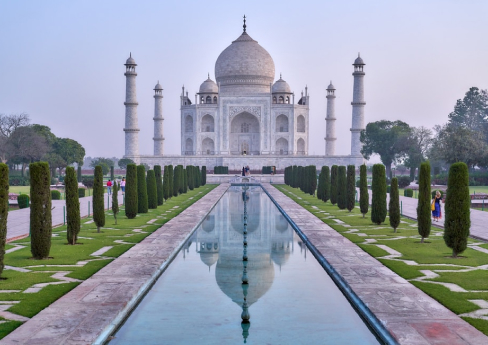
Hospitals in India
Expats and travellers in India should be aware that not all international healthcare providers are recognised by Indian hospitals. If this issue should arise you will be expected to pay for care out of your own pocket. You should keep all paperwork from your treatment or stay in hospital so that you can be reimbursed by your insurer.
Health Hazards in India
New visitors to India should drink only bottled water and avoid drinks with ice in. Particular attention should also be made to food – having an upset stomach in India is a common occurrence.
The most common disease in the country is malaria and going armed with a mosquito repellent is advised. Doctors also suggest travellers and expats receive prophylaxis against malaria before visiting India.
Pharmacies in India
Most cities in India are home to a number of pharmacies and they can be distinguished by a red or green cross. Some are open 24/7 and a huge variety of prescription medications and over the counter drugs are available at cheaper prices compared to the western world.
Emergency Care
Whilst you can call an ambulance using 102 in India traffic and questionable motorists make the process very difficult. Even the ambulances from private hospitals cannot battle the congestion. Most people, if they can, hop in a taxi to get to hospital as they can weave through the traffic with more success.
Expat Guide to India
When you think of India, you probably imagine ancient monuments like the Taj Mahal, the bustling markets of Delhi, star-studded Bollywood and the sprawling beaches of Goa. Indeed, India offers an eclectic and colourful mix of culture, landmarks, food and natural beauty, and whether you’re visiting the country for a short trip or are relocating to this remarkable nation, you’re certainly in for an unforgettable experience.
As the seventh-largest country in the world, with more than 1.2 billion people and an economy that’s not quietly growing, but rather rocketing skywards, India offers a lot of opportunity for intrepid expatriates. However, it also presents plenty of challenges ranging from terrorism and corruption to poverty and on-going conflicts with neighbouring nations.
With so much to think about, it’s essential for anyone moving to India to be prepared. Do your research, invest in appropriate international health insurance and get ready for an amazing, but sometimes tumultuous, experience.
Expat Guide to India
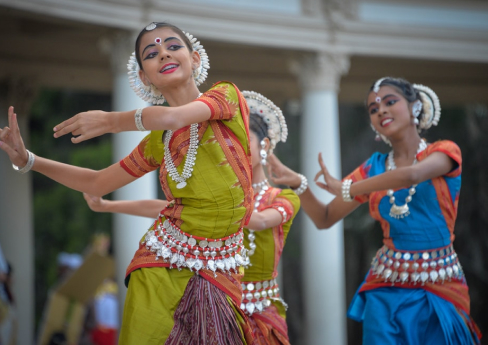
Weather in India
The climate of India is strongly influenced by the Himalayas and the Thar desert. The entire country ranges from tropical in the south, to temperate and alpine in the mountainous north. For most of India the summer is extremely hot, beginning in April and ending in the beginning of October. The hottest month is June when temperatures can reach 45°C.
The monsoon season spans from July to September and India is dominated by the humid southwest summer monsoon, which sweeps across the country beginning in late May or early June. However, unlike a lot of typically hot countries, India also has a winter between December and March. Temperatures drop to around 10°C in the northwest and peak at 25°C in mainland India, further towards the equator.
| Jan | Feb | Mar | Apr | May | Jun | Jul | Aug | Sep | Oct | Nov | Dec | |
|---|---|---|---|---|---|---|---|---|---|---|---|---|
| Temp °C | 13 | 17 | 22 | 29 | 33 | 32 | 31 | 30 | 29 | 25 | 20 | 15 |
| Rainy Days | 2 | 2 | 1 | 1 | 2 | 4 | 8 | 8 | 4 | 1 | 0 | 1 |
| Jan | Feb | Mar | Apr | May | Jun | Jul | Aug | Sep | Oct | Nov | Dec | |
|---|---|---|---|---|---|---|---|---|---|---|---|---|
| Temp °C | 24 | 25 | 27 | 29 | 30 | 29 | 28 | 28 | 28 | 29 | 28 | 26 |
| Rainy Days | 2 | 0 | 0 | 0 | 4 | 20 | 28 | 27 | 19 | 5 | 1 | 1 |
| Jan | Feb | Mar | Apr | May | Jun | Jul | Aug | Sep | Oct | Nov | Dec | |
|---|---|---|---|---|---|---|---|---|---|---|---|---|
| Temp °C | 27 | 28 | 29 | 30 | 29 | 26 | 26 | 25 | 26 | 27 | 27 | 27 |
| Rainy Days | 2 | 2 | 4 | 7 | 12 | 22 | 23 | 19 | 13 | 17 | 9 | 2 |
India Culture
India is an attack on the senses and can be overwhelming for expats. However, many foreigners comment than after having time to adapt, you will look at India in an entirely different light and come to call it home. Indian people make this extremely easy. Hospitality is encouraged at an early age and foreigners are often surprised to see how seamlessly Indian people and expats mingle.
One thing foreigners will have to accept is that India runs on a totally different clock to the western world. Getting things done can take a lot of time and many expats become at exasperated at the inefficient and time-consuming processes adopted by different industries in the country. A way to get around this is to build relationships with locals as there is always somebody who knows somebody else who can get things done quicker.
India Culture
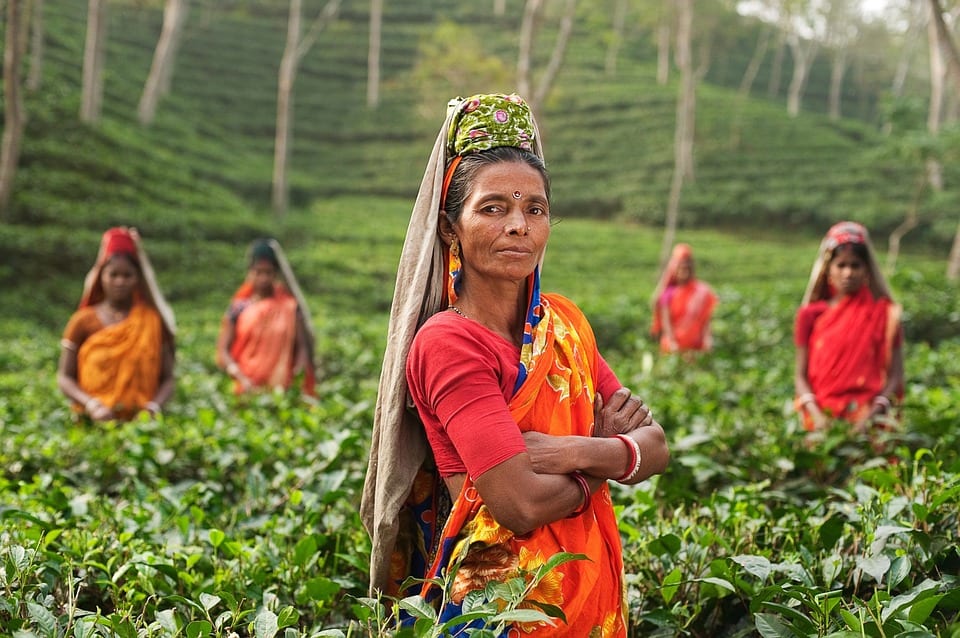
Understandably, religion plays a huge part in the culture of India. The most dominant religion is Hinduism, which composes 80.5% of the population. The religion is centred around striving to reach the highest plain of existence through reincarnation, that is based on your karma. Hinduism is a way of life for Indians and Indian cuisine, architecture, literature and arts are all heavily influenced by the religion. The rest of the country tend to be Muslims, Christians, Sikhs and Buddhists.
For all its beauty, faith, and traditions, Indian is the worst G20 countries to be born a woman, and one of the worst countries in the world for women. Although the lives of expat women will not fall foul to the same horrific victimisation that some Indian women face, there is an attitude towards women as a whole that is less than favourable. This concept is not adopted by all Indian men, but expat women and foreigners should be aware of this darker side of Indian culture.
Languages of India
The official language spoken in India, and used for most government purposes, is Standard Hindi. However, there is no specified natural language. Meanwhile, English is the secondary language and it is often used for business purposes.
Many other languages are spoken throughout the country, and these often vary by location since each state can legislate to adopt an official language for the region. For example, Marathi is the official language of Maharashtra, while Punjabi is spoken in Punjab. Tlegu, Oriya, Tamil, Kannada, Malayalam, Kashmiri, Urdu and Dogri are just some of the other languages and dialects that you might come across.
Transport in India
Travelling around Indian can be an experience in itself and, for visitors, it is part of the trip. For expats and visitors alike, getting around is not always the easiest of tasks but finding the most appropriate way to travel will help make the most of your time. Transportation ranges from modern to traditional and the choice can be overwhelming.
Buses and trains are often crowded, but they are not only cost-effective for expats, but you also get an insight into everyday life. Buses are the cheapest option, but many do prefer trains for longer-distances. Buses are sometimes the only option if heading to very rural locations. Expats should only travel on buses run by the state, and ensure bags are locked.
Although more expensive than buses, trains are still very reasonable and considerably comfortable. Depending on the distance it can sometimes be worth spending extra on a private sleeper or air conditioned apartment. Most stations have English speaking staff but, if wanting to use trains during festival periods, it is best to purchase there ahead of schedules from stations or ticketing agents.



Delhi and Kolkata also have an underground train network called the metro. Like the underground in London and subway in New York, it is a great option for city travel and traffic-free.
Foreigners that have an international driving license can hit the roads in India, but it is best to avoid if possible. Indian drivers tend to be erratic and often dangerous. The roads are chaotic warrens and can often make expats feel uncomfortable, even if not behind the wheel. Furthermore, aside from national highways, the vast majority of roads in Indian are poorly maintained and have huge potholes. For foreigners wanting to travel through India by car, it is best to invest in hiring a car with a local driver.
India is probably most famous for its rickshaws. These are three-wheeled bicycles that are either motorised or pedal-powered. They are cheaper than taxis, but passengers should agree a fare with the driver before they start the journey so everybody is on the same page.
The taxis in Indian are either Hindustam ambassador or Premier Padmini cars. These can be booked in advance, found at taxi ranks, or hailed on the side of the road. Indian taxis are required by law to have meters, but not all drivers play by the rules. Foreigners should always check that the meter is functioning at the start of their journey. Fares will be different based on number of passengers, luggage, travelling at night, and distance.
Healthcare
India has a universal healthcare system that is run by the various states and territories. The country’s constitution requires that each state work to provide public health and improve the standard of living and nutrition of the people living within its borders. However, the standard of healthcare provided is not always high and many people opt for private medical cover in both urban and rural areas in order to improve their level of care.
Public hospitals in India have no shortage of well-trained English speaking doctors. But, it is a lack of funds and equipment that are causing serious problems. Despite a large number of India’s population being affluent enough to afford private medical care, the public hospitals are still unbelievably overcrowded. Conditions are not always hygienic and facilities in rural areas can be even more basic.
The private hospitals of India are very similar to western hospitals and what a lot of expats will be used to. There are many private facilities in Mumbai, Delhi, and Bangalore. These hospitals can also be used for non-emergencies, such as regular check-ups and consultation.
Malnutrition and infant mortality are two major problems for the current health system, while a number of diseases such as hepatitis, tuberculosis, malaria, dengue fever and pneumonia are also common. Meanwhile, the country has one of the world’s highest rates of HIV infection.
To help ensure you have the best healthcare possible, be sure to opt for expat travel insurance before you travel.
India Currency
The official currency in India is the Rupee, abbreviated as INR. The rupee is subdivided into 100 paise, but paise coins are hardly in circulation anymore. So if an item is 50 paise, the amount paid with be one rupee. Expats shouldn’t be alarmed when they do not receive change, it is the norm in India.
Most change in India is hard to come by, so keep a selection of coins is ideal. There are eight notes: 5, 10, 20, 50, 100, 500 and 1,000 INR. There are also four coins: 1, 2, 5, and 10 INR.
Most major currencies are easily exchanged in India. Visitors and foreigners are better off at private bureaux de change as these often have better exchange rates than banks. Do not be alarmed if you see bureaus also posing as internet cafes, travel agents, or jewellers – this is completely normal in India and the establishments are legitimate.
India Currency
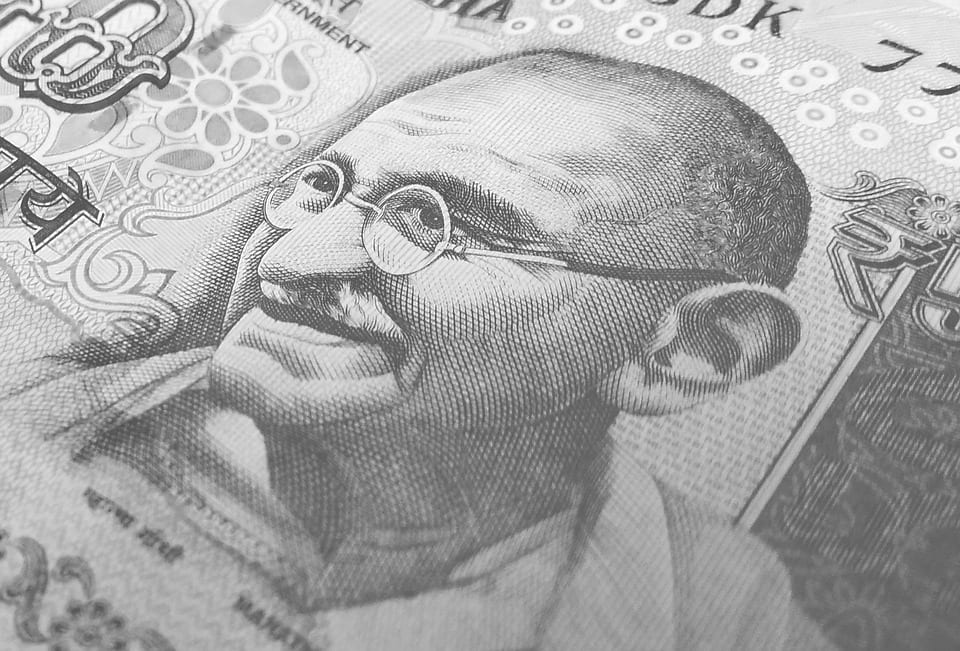
For expats who are working in India, most banks offer a non-resident savings or current account. The specifics of each account will determine on the chosen bank, but all will provide a debit card, cheque book, and internet banking. A lot of expat employers will open an account with an international bank for their employee.
For those who do not have this helping hand, foreigners will need proof of identity, proof of address and copies of their passport and visa to open a bank account. It may also pay to speak to us about working abroad insurance to ensure you are protected against medical expenses whilst working in India.
India School
Both private and public education systems are in operation throughout India and funding for these institutions may come from the central, state and local governments.
In recent years, the country’s primary education system has made great strides and the progress has led to a significant increase in literacy rates – many also attribute the country’s economic rise to an improvement in education.
That said, it’s generally agreed that further improvements need to be made, as approximately one-quarter of the population is illiterate and only seven per cent of students finish high school.
Some public schools in Indian teach in English however, the majority don’t. This can create a difficult language barrier between expat children and their Indian peers. Also, class sizes can often be huge, facilities lacking, and limited budgets sorely affect the standards or public schools.
India School
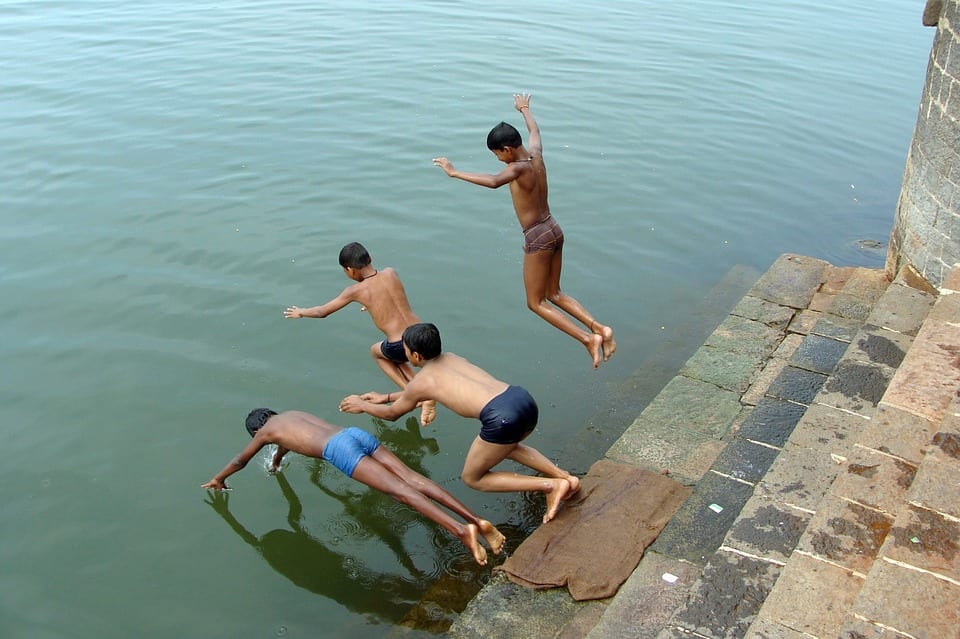
With fees substantially less that international schools, some expat children thrive in private Indian schools. They have a fantastic reputation, but the style of teaching is vastly different from the west and a lot of children can find this hard to deal with. That said, many of the children benefit from a new way of learning and also benefit from a multicultural educational environment. Private schools are an ideal option for expat parents who intend on staying in India long-term and want their children to have local Indian friends as well as other expat children.
But, most parents choose international schools so that their children can continue studying the curriculum of their home country. American and British international schools are found across India, particularly in the larger cities. International school fees are very expensive, so parents must ensure they are able to foot the bill.
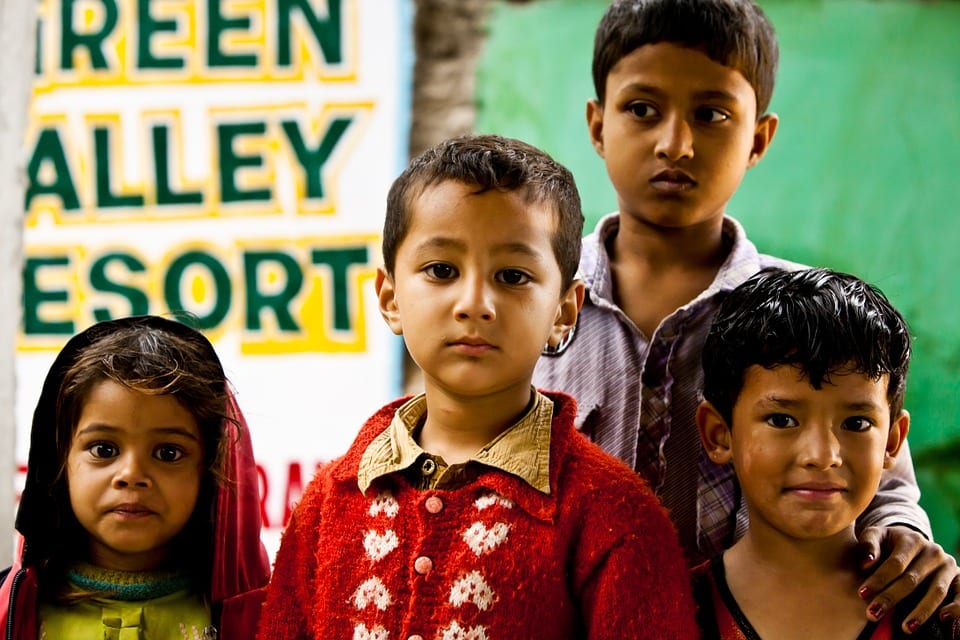
India Food & Drink
The ‘Indian food’ that western foreigners are often accustomed to is north Indian – either Mughlai or Punjabi. Indian cuisine varies from region to region, but north Indian cooking relies heavily on meat and spices. The most well-known north Indian dish is Tandoori chicken, but for an authentic Punjabi dining experience, serve it with sarson de saag and roti.
The north of India is famous for its breads as it is wheat growing country. Naan and roti accompany the majority of meals, but chapattis and parathas are also very popular. The majority of meals are comprised of one sauce dish, accompanied by rice. Diners tear off portions of bread and use their hands to enjoy their meal.



Some recognisable favourites have made their way across to the western world from north Indian. The very tasty samosa and chicken butter masala are traditional north Indian dishes, as well as Rogan Josh, as well as Chicken Biryani.
Rice is the staple in south Indian, and biryanis are also popular in this region. Thali is very popular in southern India. Thali is like a miniature buffet, served on a banana leaf or metal tray. The idea is that salty, sweet, sour, and bitter all merge into one sitting. A large pile of rice forms the base and smaller portions of curries, chutneys, and pickles are portioned into small silver pots. The meal is accompanied by a chapatti, poppadum, or naan.



Indian meals can often be spicy and expats will notice that meals are served with raita or fresh chutney. These can accompany different curries and side dishes, to cool them slightly.
Lassi is a traditional and very popular yoghurt-based drink from India. Milk-based beverages are generally very popular, including Falooda. Lassi originates in the Punjab region and is particularly enjoyed in the summer. Mango Lassi, Sweet Lassi, and Bhang Lassi are popular variations.
Tea and coffee are also widely consumed in Indian. Indian is the second largest producer of tea in the world, including the famous Assam and Darjeeling teas.
Crime in India
There is a high threat of terrorism in India. Terrorist attacks are carried out by a number of terrorist and insurgent groups. While the main focus of attacks is against Indian nationals, terrorists have previously targeted places visited by westerners including public places like restaurants, hotels, railway stations, markets, places of worship, festivals and sporting venues. Expats and visitors should be vigilant at all times, especially in public places. It is advised to monitor local media before planning your travel for any local travel warnings. If you see unattended baggage, report it promptly. Security has been strengthened, notably at major hotels and transport hubs (airports, railway and metro stations). Expats should take particular care in the lead up to and on days of national significance.
The British Foreign Ministry has stated that sexual assault on female solo travellers in India has become a major cause for concern, with women from all corners of the globe reporting that they had been sexual harassed or assaulted whilst travelling or living in India. Women who are considering travelling alone are encouraged to create a safety plan in advance and are encourage to respect local dress codes and customs, and avoid isolated areas.
Places to Visit in India
One of the most remarkably diverse countries on the planet, Indian is a melting pot of experiences for visitors and expats alike. Culinary delights, artistic heritage and inspiring landscapes come together to make the country undeniably unique and special. Don’t know where to start? Let us take you there…
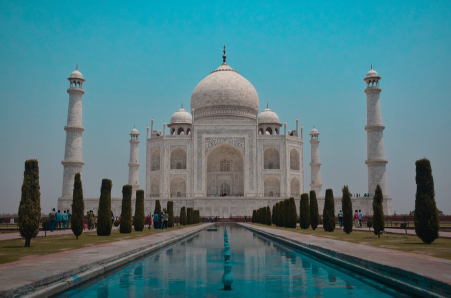
Taj Mahal, Agra
Agra, in itself, is an unmissable stop on any visit to India. However, many travel to the city to visit the iconic and beautiful Taj Mahal. The UNESCO World Heritage Site is a symbol of love, built by Emperor Jahangir in memory of his third wife. The white domed structure boasts delicately detailed interiors, tranquil gardens and a collection of other impressive buildings.
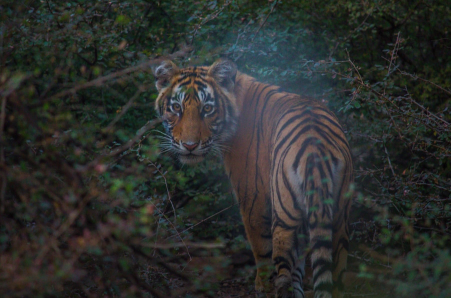
Ranthambhore National Park
This vast wildlife reserve is located near the town of Sawai Madhopur in Rajasthan. The park is most famous for its tigers and visitors can be taken on safari rides; guests often indulging in more than one to cover as much of the park as possible.

Kerala
The backwaters of Kerala are often referred to as the number one tourist destination in the whole of India. Located on the Arabian Sea coast, Kerala is bequeathed with beautiful chains of lakes and lagoons. Many visitors like to hire a houseboat to stay in, gently meandering along the idyllic rivers lined with palm trees. There are dozens of villages and communities throughout this area which you can visit and get a real sense of everyday life and culture in this interesting place.
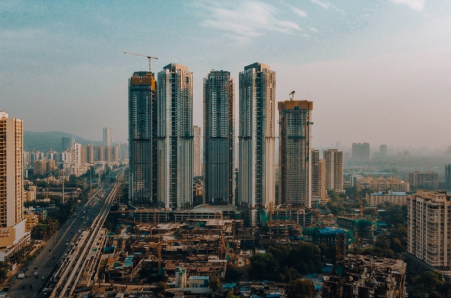
Mumbai
Formerly known as Bombay, Mumbai is the most densely populated city in India. Mumbai is overwhelming for the senses, with different smells, noises, and sights thrust at you every which way you turn. Despite Mumbai being home to shiny shopping centres and stylish bars, there are still many areas that are poverty stricken.

Shimla
Known as ‘Queen of the Hills’, Shimla is located in the north-west Himalayas. Adorning the slops of mountains and hills are unusual neo-gothic buildings, set in thick forest. These are originally from the colonial period, and many Shimla people live in them today. Many visitors head to The Christ Church, which is the second oldest church in northern India. It has an incredible stained glass window unlike any other church in the world.